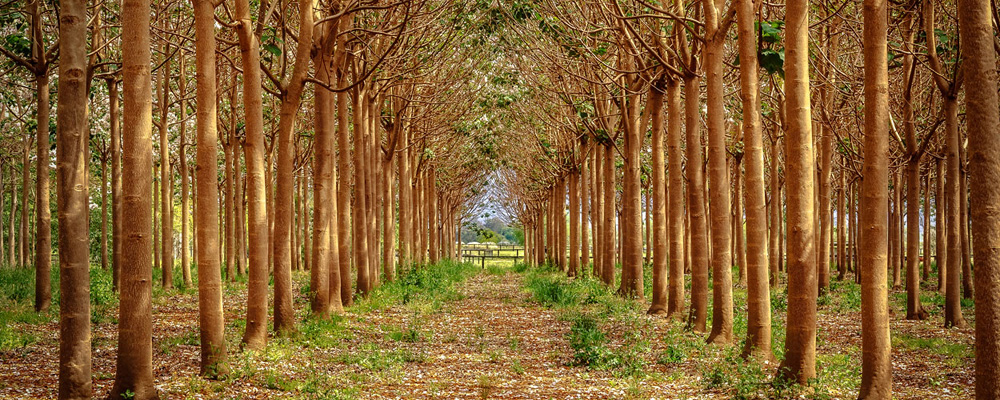We produce carbon emissions with many of our daily activities. One method that people are turning to as a way to reduce their environmental footprint is “carbon offsets”.
The idea is to make reductions in carbon through some activity in order to offset the carbon that is emitted through our daily lives. World Tree has a very unique carbon offset program, and has generously agreed to share their insights with us through a Q & A.
Q1. What is a carbon offset program, and why is it important?
Everyone knows we need to take action to reduce atmospheric carbon and there is a lot of conversation happening at the political level about a ‘low carbon future’. The problem is we’re not getting there fast enough.
In 2014, we produced roughly 36 giga-tons of CO2. We need a way to offset all that carbon now so that we can buy ourselves time to implement clean energy technologies and renewables.
Trees are the lungs of our planet – they actually feed on carbon and put it to good use. We need more trees and we need them now.

Tree are the lungs of our planet / Image Credit: worldtreecop.com
Q2. How does World Tree’s carbon offset program work?
World Tree’s Carbon Offset Program is based on the Empress Splendor tree. This is the fastest growing hardwood tree in the world – you can look it up in the Guinness Book of World Records. The trees have huge leaves, grow 10-20 feet tall in the first year and reach maturity within 10 years.

Empress Splendor Tree Leaves / Image Credit: worldtreecop.com
Most importantly, the Empress Splendor absorbs 11 times more carbon than any other tree. A single tree will eat up on average one ton of carbon a year.
We need to plant a lot of trees to make the kind of difference we want to make, so we have created a partnership with impact investors and farmers to grow Empress Splendor plantations. The investors purchase the trees and the farmers grow the trees on their land with the help of World Tree.
We call them investors because not only do they offset carbon, but they also make money in the process. After 10 years, we harvest the trees and sell the lumber which has the unusual properties of being both hard and lightweight. The profits are shared with the investors, farmers and World Tree. As far as we know, this is the only carbon offset program that includes a financial return to the participants.
When the trees are harvested, they regenerate themselves from the stump, continuing the cycle of carbon sequestration.
Q3. With tree planting carbon offset programs, there are those who have concerns with the introduction of fast-growing and invasive tree species that damage native forests. Has your team considered this, and how is it getting addressed?
Yes! We get asked this question a lot.
The Empress Splendor is from the genus Paulownia. There are many different species and only one is invasive – the Paulownia tomentosa. We would never use this variety.
The trees we use are non-invasive, not genetically modified and prefer organic farming methods. We grow them from mother stock using propagation methods that have been used for centuries. They are sterile, which means that even when they go to seed they don’t spread.
It is important to understand that this is not a reforestation project. We are planting the trees in the USA and Canada as a crop on unused farmland for the purposes of carbon sequestration and timber production.

5 Year Old Splendor Empress Tree Log / Image Credit: worldtreecop.com
The world’s demand for timber is increasing at a dramatic rate. The average North American consumes the equivalent of a 100 foot tree every year.
The United Nations predicts that the world’s demand for wood will double by 2050. How are we going to meet this demand? Right now we can’t keep up and we are destroying our old growth forests at an alarming rate. This has to stop. Our answer is to grow trees for the purpose of timber so that we can leave the forests alone.
One more thing: the trees also regenerate the soil. You can plant them on land that has been ravaged by, say, pine crops or tobacco and use the trees to bring nutrition back to the soil.
Q4. What is the biggest barrier to the success of World Tree’s program?
There is a lot of resignation about carbon offsets and credits and for good reason. There is a track record of companies buying carbon credits to lower their carbon footprint – but the problem is that if no new actions are really being taken, this is nothing more than green-washing.
When people – especially environmentalists – find out that our program offers potential financial returns the skepticism really kicks in. Really, we can help to clean up the planet, protect our forests and then you are offering this as an investment? Everyone’s looking for the catch.
When Morley Safer from the show ’60 Minutes’ found out about World Tree, he called us wanting to know if what we were claiming about the tree was too good to be true. He was so impressed with what he discovered that he ended up doing a very supportive documentary on us for the American Environmental Review.
Q5. Is there anything else you would like our readers to know?
We have been in business for 15 years and have many stories to share about this amazing tree. You can find out more about our program at worldtreecop.com or join one of our webinars to find out more.

Empress Splendor Tree Startlings / Image Credit: worldtreecop.com
